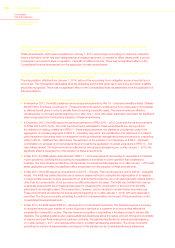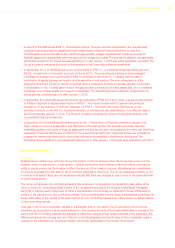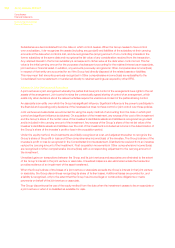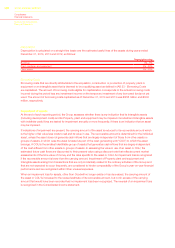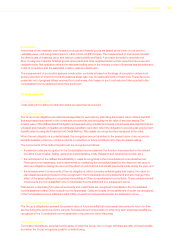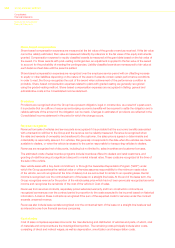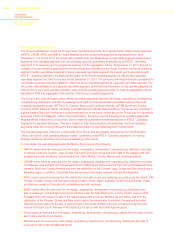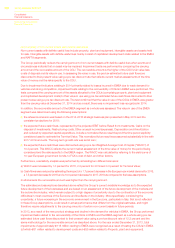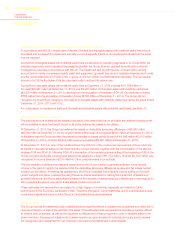Chrysler 2014 Annual Report Download - page 164
Download and view the complete annual report
Please find page 164 of the 2014 Chrysler annual report below. You can navigate through the pages in the report by either clicking on the pages listed below, or by using the keyword search tool below to find specific information within the annual report.
162 2014 | ANNUAL REPORT
Consolidated
Financial Statements
Notes to the Consolidated
Financial Statements
Share-based compensation
Share-based compensation expenses are measured at the fair value of the goods or services received. If this fair value
cannot be reliably estimated, their value is measured indirectly by reference to the fair value of the equity instruments
granted. Compensation expense for equity-classified awards is measured at the grant date based on the fair value of
the award. For those awards with post-vesting contingencies, an adjustment is applied to the fair value of the award
to account for the probability of meeting the contingencies. Liability-classified awards are remeasured to fair value at
each balance sheet date until the award is settled.
Share-based compensation expenses are recognized over the employee service period with an offsetting increase
to equity or other liabilities depending on the nature of the award. If awards contain certain performance conditions
in order to vest, the Group recognizes the cost of the award when achievement of the performance condition is
probable. Share-based compensation expenses related to plans with graded vesting are generally recognized
using the graded vesting method. Share-based compensation expenses are recognized in Selling, general and
administrative costs in the Consolidated income statement.
Provisions
Provisions are recognized when the Group has a present obligation, legal or constructive, as a result of a past event,
it is probable that an outflow of resources embodying economic benefits will be required to settle the obligation and a
reliable estimate of the amount of the obligation can be made. Changes in estimates of provisions are reflected in the
Consolidated income statement in the period in which the change occurs.
Revenue recognition
Revenue from sale of vehicles and service parts is recognized if it is probable that the economic benefits associated
with a transaction will flow to the Group and the revenue can be reliably measured. Revenue is recognized when
the risks and rewards of ownership are transferred to the customer, the sales price is agreed or determinable and
collectability is reasonably assured. For vehicles, this generally corresponds to the date when the vehicles are made
available to dealers, or when the vehicle is released to the carrier responsible for transporting vehicles to dealers.
Revenues are recognized net of discounts, including but not limited to, sales incentives and customer bonuses.
The estimated costs of sales incentive programs include incentives offered to dealers and retail customers, and
granting of retail financing at a significant discount to market interest rates. These costs are recognized at the time of
the sale of the vehicle.
New vehicle sales with a buy-back commitment, or through the Guarantee Depreciation Program (“GDP”) under
which the Group guarantees the residual value or otherwise assumes responsibility for the minimum resale value
of the vehicle, are not recognized at the time of delivery but are accounted for similar to an operating lease. Rental
income is recognized over the contractual term of the lease on a straight-line basis. At the end of the lease term, the
Group recognizes revenue for the portion of the vehicle sales price which had not been previously recognized as rental
income and recognizes the remainder of the cost of the vehicle in Cost of sales.
Revenues from services contracts, separately-priced extended warranty and from construction contracts are
recognized as revenues over the contract period in proportion to the costs expected to be incurred based on historical
information. A loss on these contracts is recognized if the sum of the expected costs for services under the contract
exceeds unearned revenue.
Revenues also include lease rentals recognized over the contractual term of the lease on a straight-line basis as well
as interest income from financial services companies.
Cost of sales
Cost of sales comprises expenses incurred in the manufacturing and distribution of vehicles and parts, of which, cost
of materials and components are the most significant portion. The remaining costs principally include labor costs,
consisting of direct and indirect wages, as well as depreciation, amortization and transportation costs.


